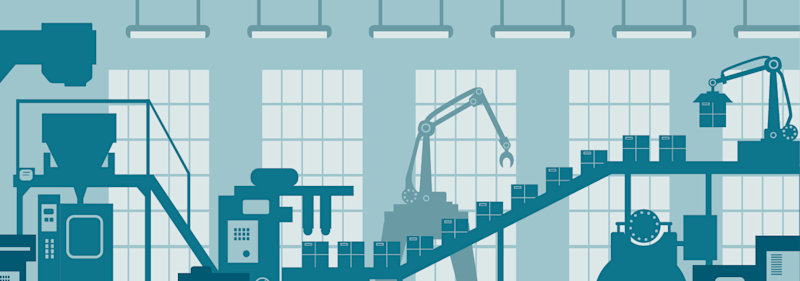Entities working toward continuous improvement and smoother operations management as well as users, builders, and developers of additive, automation, subtractive, workholding, and metrology have been making manufacturing technologies change at a rapid pace. This is the culmination of various research and development efforts over the years, combined with businesses realizing these technologies’ economic benefits. This intersection drives both the creation of new technologies and the introduction of new companies into the market.
Standards
Continuous improvement and operations management has seen a refresh thanks to standards in digital manufacturing. The days of paper-based decision-making on the operation floors are gone. Is paper completely useless? No. Paper is often the connection from the physical to the digital. Now, the ecosystem standards help digital manufacturing collect, store, visualize, and analyze data. In their white paper, “Current Standards Landscape for Smart Manufacturing Systems,” NIST states, “Standards are the building blocks that provide for repeatable processes and the composition of different technological solutions to achieve a robust end result.” This is vital to data-driven decision-making. As organizational needs and equipment change, standards will continually update to stay relevant and applicable to the needs of the industry.
Adding efficiency through additive
Additive manufacturing processes have gained significant acceptance over the years through steady research and development and experimenting with different use cases. Material standards allow more and more OEMs to be more accepting of this process. While additive manufacturing will not take over the entire manufacturing industry, it will continue to grow as companies understand the value of the process for their specific needs. OEMs may see increased efficiency in the final product through a design that can only be achieved through additive processes. For instance, a tool and die strategy can achieve better performance or shorter lead times; In his article, “In Automotive, Is Additive Manufacturing an Answer for Die Cast Tooling?” Brent Donaldson of Additive Manufacturing Media states, “3D-printing conformal cooling channels close to the surface of these tools creates a thermally balanced die, and how the benefits cascade into decreased cycle time, lower scrap rates and lower labor costs.”
Automation’s improvements
Automation has gained more acceptance due to changes in capability and ease of implementation. Changes in enabling technologies such as sensors, machine vision, programming, and safety are driving this change. In a recent article for AMTonline.org, “Innovations in Machine Vision for the Manufacturing Industry,” David Bruce of FANUC America Corp. discussed the increasing adoption of machine vision: “Machine vision (MV) is a technology that continues to grow both in terms of its raw capabilities and ability to add value to many different industries, including manufacturing. This is due primarily to the increasing capability and lower cost of the computing hardware power required to execute MV applications.” These changes extend to technologies related to safety. Previous iterations of automation required distance and hard guarding for safety; current collaborative robots and cell machine vision systems are driving faster and less restrictive automation cells. Programming robots have also seen a change to match the underlying technologies. Offline programming was the primary method, but teaching through a pendent and using lead-through and demonstration techniques are growing in popularity. These hands-on techniques allow companies with low volume and high mix to consider automation due to being a cost-effective solution for scaling up.
Metrology, efficiency, and the digital twin
Shifts in metrology are becoming faster and more valuable to the business. This is through the integration of inspection equipment into other equipment and processes. On the surface, machine inspection may delay the process, but value can be derived from overall processing time. In the 2017 SME article, “Metrology Tools for In-Process Inspection,” Lillian Barraud of Blum-Novotest Inc. describes the impact of in-machine inspection: “They are now willing to accept a slight increase in cycle time to include in-process inspection because it is the most efficient and intelligent way to ensure that all parts are produced or manufactured within tolerance, avoiding scrap, scrap recycling, and post-process manual gages.” This integration can also be seen with machine vision and robotics. More use cases are being developed to verify assemblies through automation technologies. Finally, the data from metrology is feeding the digital twin and thread. In their white paper, “Industry 4.0 and the digital twin: Manufacturing meets its match,” Deloitte states, “With the emergence of increasingly favorable storage and computing costs, the number of use cases and possibilities to enable a digital twin has greatly expanded, in turn driving business value.”
The road ahead
In the end, what does this mean to manufacturers of today? To start, be aware of and participate in standards relevant to manufacturing technologies. Manufacturing has been aware of standards relevant to the product (material, process, and form), and manufacturing technologies embrace this methodology for scaling adoption. Plan for continuous changes and updates to capital equipment. This mindset encompasses both the organizational mindset and the business acumen to maintain capital equipment. Finally, humans will always play a pivotal role in manufacturing, the future of which depends on creating a culture of continuous learning and improvement. Agile and flexible manufacturing needs will continue to drive the technology, and the workforce will have to maintain or stay one step ahead to retain talent and drive a collaborative operation.





